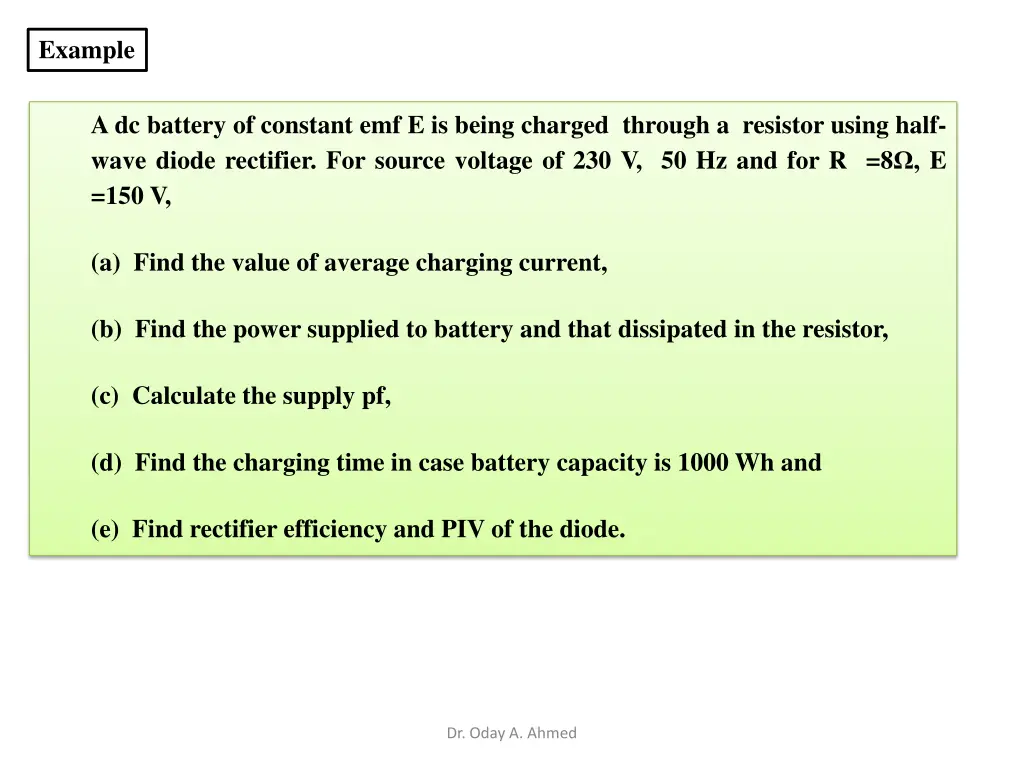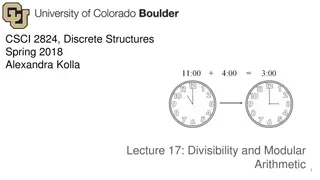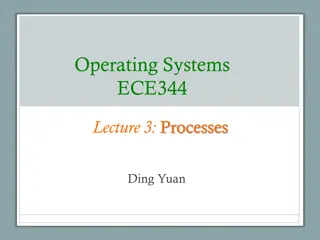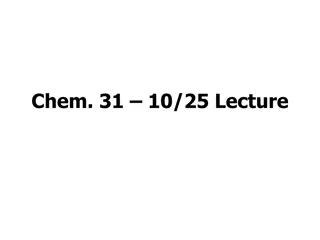
Charging and Power Calculation in Electrical Circuits
Explore the calculations involved in charging a battery with a constant EMF using a half-wave diode rectifier, including finding the average charging current, power supplied to the battery, power dissipated in the resistor, supply power factor, charging time for a specific battery capacity, rectifier efficiency, and PIV of the diode. Additionally, analyze the power absorbed by a heater element connected across a 230V, 1kW supply through an SCR at different firing angles.
Uploaded on | 1 Views
Download Presentation

Please find below an Image/Link to download the presentation.
The content on the website is provided AS IS for your information and personal use only. It may not be sold, licensed, or shared on other websites without obtaining consent from the author. If you encounter any issues during the download, it is possible that the publisher has removed the file from their server.
You are allowed to download the files provided on this website for personal or commercial use, subject to the condition that they are used lawfully. All files are the property of their respective owners.
The content on the website is provided AS IS for your information and personal use only. It may not be sold, licensed, or shared on other websites without obtaining consent from the author.
E N D
Presentation Transcript
Example A dc battery of constant emf E is being charged through a resistor using half- wave diode rectifier. For source voltage of 230 V, 50 Hz and for R =8 , E =150 V, (a) Find the value of average charging current, (b) Find the power supplied to battery and that dissipated in the resistor, (c) Calculate the supply pf, (d) Find the charging time in case battery capacity is 1000 Wh and (e) Find rectifier efficiency and PIV of the diode. Dr. Oday A. Ahmed
the value of average charging current Dr. Oday A. Ahmed
the power supplied to battery the power dissipated in the resistor Dr. Oday A. Ahmed
Calculate the supply pf, Find the charging time in case battery capacity is 1000 Wh (Power delivered to battery) (charging time in hours)=Battery capacity in Wh Hence, charging time is Dr. Oday A. Ahmed
rectifier efficiency ????? ????????? ?? ??????? ????? ????? ????? PIV of the diode What is the PIV of the single-phase diode Rectifier Supply R-Load Dr. Oday A. Ahmed
A single-phase 230V: 1kW heater is connected across I-phase 230V, 50Hz supply through an SCR. For firing angle delays of 45 and 90 , calculate the power absorbed in the heater element. 230V, 1kW Heater Dr. Oday A. Ahmed
Solution Heater resistance: For =450, RMS output voltage: 2.230 2 ? ? ? +1 Power 2???900= 155.071 V ???= absorbed by heater element for =450 4 Dr. Oday A. Ahmed
Power absorbed by heater element for =450 2 2 ??? ? 155.071 230 = 1000 = 454.57 ???? For =900, RMS output voltage: 2.230 2 ? ? ? +1 2???1800= 115 V ???= 2 Power absorbed by heater element for =900 2 2 ??? ? 115 230 = 1000 = 250 ???? Dr. Oday A. Ahmed
In a single-phase full-wave diode bridge rectifier, the diodes have a reverse recovery time of 40 s. For an AC input voltage of 230 V, determine the effect of reverse recovery time on the average output voltage for a supply frequency of (a) 50 Hz and (b) 2.5 kHz. Solution D 1 and D2 will not be off at t= but will continue to conduct until t=( / )+trr Dr. Oday A. Ahmed
With zero reverse recovery time, average output voltage, Dr. Oday A. Ahmed
For f= 50 Hz and trr = 40 s, the reduction in the average output voltage, Percentage reduction in average outpace voltage Dr. Oday A. Ahmed
(a) For f= 2.5k Hz, the reduction in the average output voltage, Percentage reduction in average output voltage Dr. Oday A. Ahmed






















